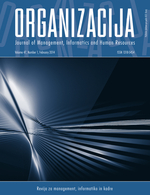Innovation Leaders, Modest Innovators and Non-innovative SMEs in Slovakia: Key Factors and Barriers of Innovation Activity
Abstract
Background and Purpose: The field of innovation represents for small and medium enterprises (SMEs) a fundamental challenge. If the number of innovative SMEs is to rise, it is necessary to identify key factors determining their innovation activity and eliminate the innovation barriers. The main purpose of the paper is to present the results of primary research focused on identification (evaluation) of key factors and barriers determining innovation activities in Slovak SMEs. The division of SMEs into three groups of enterprises: innovation leaders, modest innovators and non-innovators enables to identify the differences in managers´ perception of the main factors and barriers determining innovation activities in various types of SMEs and to formulate policy implications for Slovak SMEs. Design/Methodology/Approach: Results of the empirical research were processed using MS Excel and the statistical analysis of the data in R3.2.4. statistical system was done. For statistical tests we assumed significance level (α = 0.1). Results: Evaluating the importance of the key factors a majority of enterprises (64.71%) indicated financial resources as the most important factor for the innovations. There is no statistically significant difference in individual (analysed) factors between innovation leaders, non-innovators and innovation followers (modest innovators). The results gained from Fisher exact test (p-value = 0.11) indicated a small difference in evaluating the significance of individual barriers between innovation leaders, non-innovators and modest innovators. Majority of enterprises also see as the main barriers to develop innovation activities bureaucracy and corruption and inappropriate state support of innovation activities. Conclusion: The main implications (conclusion) coming from the research are basic recommendations for state policy makers as well as SME´s managers to foster innovation activities in enterprises. They refer to the areas of financial resources, high-quality human resources, cooperation and participation of SMEs in different networks and clusters, systematic institutional support to SMEs, well-created vision and clearly formulated aims, and willingness of enterprises to innovate. Recommendations are summarised following the results of factor´s and barrier´s evaluation.
Refbacks
- There are currently no refbacks.

